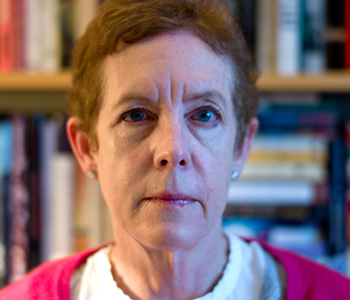Amanda Boetzkes
Plastic Capitalism: Contemporary Art and the Drive to Waste
MIT Press
272 pages, 7 x 9 inches
ISBN 978 0262039338
Waste occupies a paradoxical position today: it is made to be disposable, and we want to get rid of it, but we cannot. Where at other times in history, we’ve been able to banish waste—burn it up, bury it, or otherwise make it disappear—today, we are producing forms of waste that do not disappear. While we still have a drive to waste, waste therefore perpetually returns to us, often in toxic forms. Art gives us many perspectives—from the intimate to the global—of these eternal returns of contemporary waste.
This is a book about contemporary art and what it has to tell us about our production and consumption of waste. It charts a general preoccupation with different forms of waste in contemporary art, and it considers how artists use waste to critique, express, and imagine the global ecological condition. The book analyzes waste from an aesthetic perspective, and thinks about art as an ecological form, and specifically a form of waste.
Addressing diverse artistic practices from around the world, the book features artists from the United States, Canada and Mexico, to Brazil, South Korea, China, and Europe. I consider artworks that are situated in landfills, installations made entirely out of fluorescent plastics, performance and body art that engage waste materials, as well as documentary photographs and films that track the movement and accumulation of non-biodegradable waste. So the scope of the book is expansive.
An important facet of the argument is that the forms of waste we have been producing since the mid-20th century are deeply tied both materially and ideologically to petrocapitalism. The rise of the global oil industry has put us at an impasse: we are situated between a cultural imperative to conserve and recycle energy for ecological reasons such as climate change, but we are also subject to an economic imperative to expand oil production, and with it, oil consumption, on the other. How can we both burn oil and conserve energy? Art shows us how the material wastes of the cultures of global oil express exactly this dilemma. Waste keeps coming back in toxic forms.
The book includes a genealogy of waste art from its modernist origins to its contemporary global and ecological conditions. It begins with an analysis of the politics and representation of gleaning and ragpicking in art in the nineteenth century. From that starting point, I discuss more recent forms of waste handling in art, including interventions in landfills, exchange-based practices, ecologically-charged natural history displays, and visual practices involving plastics. These aesthetic forms show the emergence of a new waste imaginary that struggles with the scale of climate change and its effects, the global scope of oil capital, processes of anthropogenesis which change the nomenclature of life itself, and the possibilities of resistance and ethical response that emerge from this fraught terrain.
The best way to read this book is to look at the artworks! The book is beautifully designed, and the sequence of the images articulates the movement of the argument. But more than this, the book is attentive to the language and poetics of theorists and artists dealing with waste, elemental philosophy, and even the aesthetic dimensions of the oil economy itself.
The book’s primary tenet, that waste is defined in relation to the global economy of energy, derives from the French poet and surrealist Georges Bataille’s book, The Accursed Share, published in the late 1940s. Bataille suggested that organized societies inevitably produce a surplus of resources. In restricted economies, such as those that appeared under the competing political régimes of the twentieth century, this excess is expended in the form of destructive spoilage, such as war and global pollution. His analysis of the alternative, the general economy, however suggests how societies might invoke ethical strategies of expenditure, such as sacrificial offerings, the ritualistic destruction of objects of value, or more pertinent to this study, the production and consumption of art. Bataille argues that systems gather energy in excess in order to expand. Inevitably, however the system is driven to expend this excess whether consciously and openly (as in generous) wasting, or through the unpredictable disasters that result from suppressing this drive. His critique of capitalism is that it refuses energy expenditure and dictates only the consumption and stockpiling of energy thus generating ever more totalizing forms of destruction as the system expands.
The Accursed Share serves as a springboard into a wealth of other theories of waste discussed in the book. Bataille’s theory of economy has recently been investigated for its ecological potential. My book connects this new scholarship to the aesthetic history of contemporary art. I argue that artists are challenging the restricted economy that would conceal and disavow its systemic forms of waste. I therefore extend ecology theory in new directions by addressing aesthetic and cultural perceptions of human waste.
Often, when art is analyzed in relation to the political, scientific, or ecological climate, it is considered illustrative but not critical or formative. Plastic Capitalism suggests that art is constitutive of an ecological consciousness, and not simply an extension of it. Moreover, I interpret specific works with a view to showing how critical forms are an integral facet of the visual experience of art. The book insists on the centrality of contemporary art for the study of the ecological condition. It is not a survey of artists of this genre; rather it provides the tools for situating contemporary art in the disciplines of political ecology, energy humanities, environmental history, and eco-criticism.
In addition to giving an account of art, the book argues against a current trend in art history, cultural theory, and environmental studies that subsumes reflection on the aesthetic dimension under the domain of the “political” or “history.” While the book is certainly attuned to the prevailing political vectors of global ecology and makes these clear, it also provides a fresh perspective on the trajectories of ecological culture through the redistributions of the sensible world that art provides.
If you were to approach this book at a bookstore, you would immediately be struck by the cover image. It’s a photograph of a couple sealed in plastic together with dozens of running shoes, taken by the Japanese artist Haruhiko Kawaguchi (aka Photographer Hal). It is one of many in which the photographer hermetically seals couples in plastic with their favorite objects. He only has one minute to snap the picture before he has an assistant break open the plastic to let in the air. The whole process is tense, but people love having their portraits taken in this way. I take this practice to be exemplary of our relationship to plastic capitalism: we are steeped in it, but it produces a lot of anxiety, particularly about the issue of the disposability of waste. The cover speaks volumes about the kinds of issues I discuss in the book.
But I would also hope a reader would leaf through the book and see the other artworks that I discuss. Some of them are familiar, like the famous photograph by Chris Jordan of an exposed albatross corpse showing pieces of hard plastic inside. Others, perhaps are unexpected, like Melanie Bonajo’s Furniture Bondage (2007), an image of a woman standing naked, with mundane household objects strapped to her body. Our patterns of waste production and consumption are not predictable, and they register in unusual ways in contemporary art.
There are a lot of images of figures with trash: people walking, dancing, sorting, posing in landfills. There are maps, films, photographs, drawings, and more. Some of the images are beautiful. Some are hideous. Many are disturbing. All are fascinating. My hope is that they stand as a provocation to read further, to seek out the descriptions and from there, the arc of the book’s argument.
I close the book with a poem by Adrienne Rich from 1973 called “Diving into the Wreck”. I find this poem heart-wrenching, but at the same time it captures so much of the thinking and the analysis of contemporary art that I have worked with. If there is one thing to read in the store, after looking through the images, it would be that poem.
When I started the book, my sincere hope was that people would understand that a politics of managing or controlling domestic waste was a symptom of an economic logic, rather than a truly ecological paradigm. I also wanted the reader to see how important art is to visualizing the “big picture” of waste, and making strong connections between the global circulation of waste and the economic paradigm of capitalism.
From my perspective now, it seems more important than ever that people connect to the sensibilities of the artworks I discuss. Nobody is a stranger to the fact that there is a climate crisis, and that global warming is a symptom of carbon emissions, the largest form of planetary waste produced by the global oil economy. The question is: how might we think or feel about this predicament? I would like people to engage with both the affective and somatic dimensions of waste through these works of art. The artworks are reflective, energizing, even if they strike us with the grief and overwhelm of ecological catastrophe.
I would like readers to come away knowing how intelligent and generative the realm of contemporary art really is. So many people think of art as an unnecessary extravagance. I could not disagree more. This is a symptom of how cheap the capitalist orientation is, and how much it demands that we deprive ourselves of what is exuberant in life. Contemporary art may be extravagant, but we need its form of criticism and insight. Artists show us perspectives of the global condition that are often denounced or diminished because they sit at odds with the calculated ways in which we visualize the world. I see this as a sign of how deeply entrenched economic thinking has become.
I hope this book goes some distance towards showing that we cannot envision a future without artistic visualization; and that artistic visualization might find us a way of being that breaks with the capitalist mindset. This is a hope not just for the public at large, but for scholars too. Capitalism impoverishes people from all walks of life. Precarious times can make people think cheaply and forget the energies and aesthetic dimensions of planetary life. The artists in this book have not forgotten, however, and want to remind all of us how much we need to waste to live, and to waste well. To understand that statement as an ecological one, however, you would have to spend some time reading the book!




We don't put paywalls. We don't distract you with ads. We don't sell your data.
Please help to keep this running!